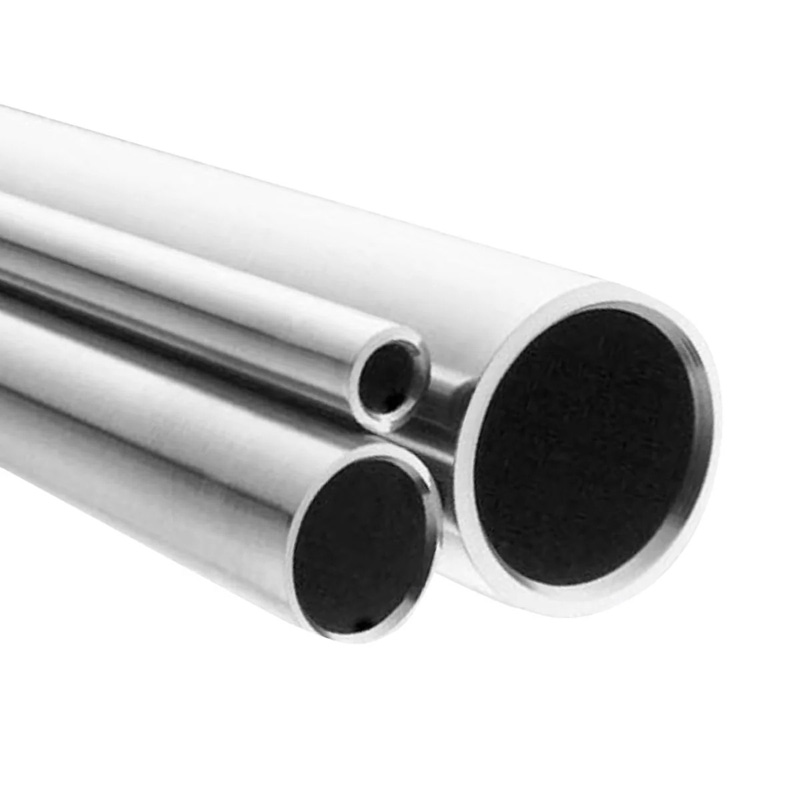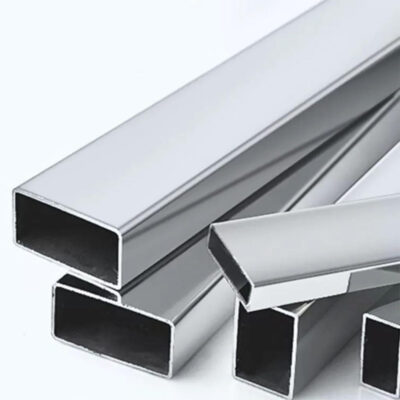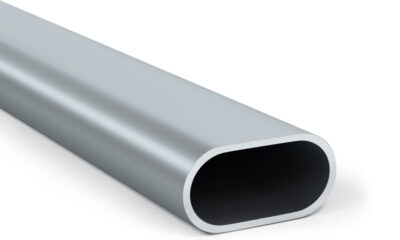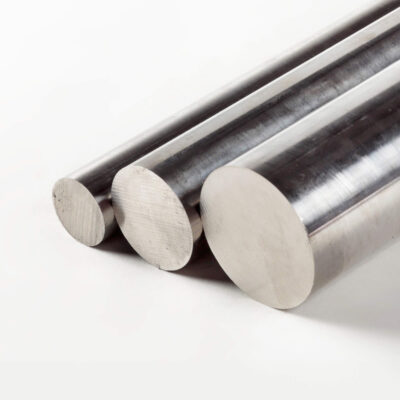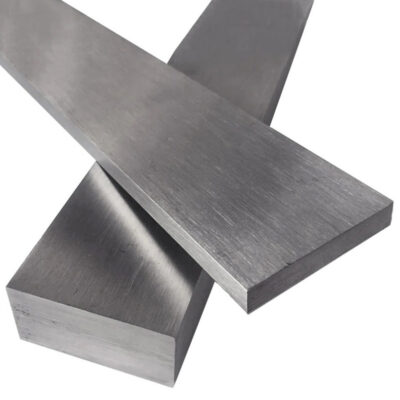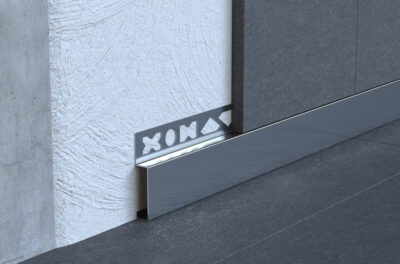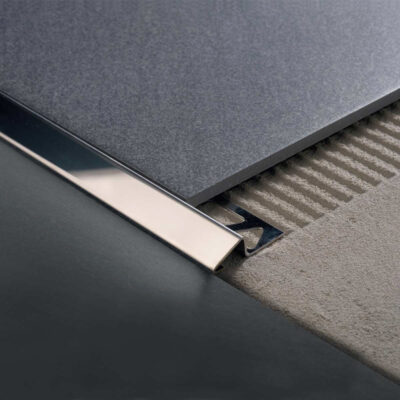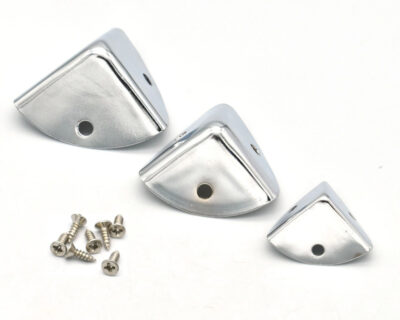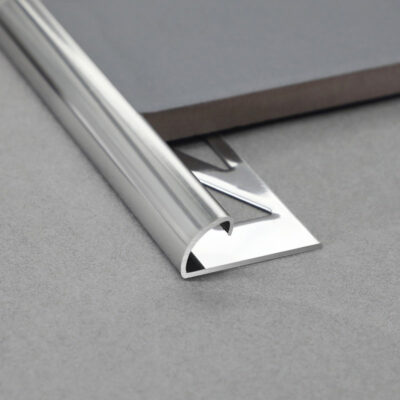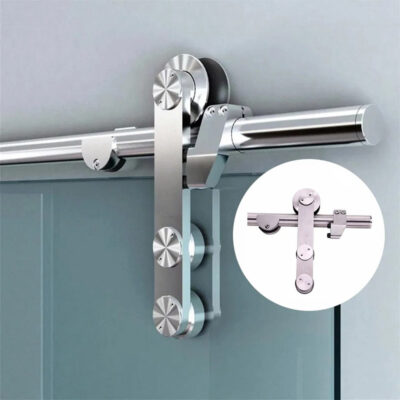The Evolution of Welded Stainless Steel Tubes in Modern Industry
The first time I walked through a modern stainless steel tube manufacturing facility, I was struck by the precision and complexity involved in creating what many might consider a simple product. The gleaming lines of welded stainless steel tubes—ranging from tiny capillary tubes to large-diameter pipes—represented not just manufacturing prowess but the backbone of countless industrial applications worldwide.
Welded stainless steel tubes have evolved dramatically since their introduction in the early 20th century. Originally developed as an alternative to seamless tubes, the welding technology has transformed from basic fusion methods to sophisticated laser and high-frequency induction welding processes. This evolution mirrors the growing demands of industries requiring materials that combine strength, corrosion resistance, and cost efficiency.
Today’s welded stainless steel tubes bear little resemblance to their early predecessors. Modern manufacturing techniques have virtually eliminated many of the quality concerns that once plagued welded products. A conversation with a metallurgist at a recent industry conference revealed something surprising: “With current technology, a properly manufactured welded tube can match or even exceed the performance of seamless tubes in many applications—while maintaining significant cost advantages.”
E-Sang has positioned itself at the forefront of this manufacturing evolution, focusing on precision and consistency in their welded stainless steel tube production. Their approach integrates advanced quality control systems with state-of-the-art welding technology to produce tubes that meet increasingly stringent industry requirements.
The significance of these products extends far beyond their immediate appearance. From the food processing equipment that safely handles our consumables to the critical components in nuclear facilities, welded stainless steel tubes have become indispensable in modern industrial infrastructure. Their versatility, coupled with advancements in production methods, has expanded their application into virtually every sector of manufacturing and construction.
Manufacturing Processes: The Science Behind Quality Tubes
The creation of a high-quality welded stainless steel tube begins long before the actual welding process. It starts with material selection—typically austenitic stainless steel grades like 304/304L or 316/316L for most commercial applications, though ferritic, martensitic, and duplex grades are also used for specialized requirements.
The manufacturing process typically follows these key stages:
Coil preparation and slitting – Stainless steel coils are cut to precise widths that will ultimately determine the tube’s circumference.
Forming – The flat strip is gradually formed into a round, square, or rectangular shape through a series of rollers.
Welding – The edges are brought together and welded using one of several methods.
Post-weld treatment – The weld is annealed, polished, or otherwise treated to enhance properties.
Sizing and finishing – The tube passes through sizing rolls to achieve final dimensions and undergoes surface finishing.
The welding process itself deserves particular attention, as it significantly impacts the tube’s final properties. There are several dominant welding technologies used in modern production:
Welding Methods Comparison
| Welding Method | Key Advantages | Typical Applications | Weld Characteristics |
|---|---|---|---|
| TIG (GTAW) | Highest quality weld seam, Excellent corrosion resistance | High-purity applications, Sanitary tubing, Heat exchangers | Nearly invisible weld seam, Minimal heat affected zone |
| Laser Welding | Precise, high-speed welding, Very narrow heat affected zone | Thin-walled tubes, Precision components, Automotive | Minimal distortion, Very clean welds, High strength |
| High-Frequency Induction | High production speeds, Cost-effective for large volumes | Structural applications, Standard commercial tubing | Good mechanical properties, Consistent weld quality |
| Plasma Arc | Deep penetration, Good for thicker walls | Heavy-duty applications, Specialized thick-wall tubes | Strong welds, Wider heat affected zone than laser or TIG |
Dr. Sarah Chen, a welding technology specialist I consulted with, explained: “The choice of welding method significantly impacts not just the tube’s performance but also its microstructure at the weld zone. TIG welding, for example, produces a very clean, smooth weld with minimal heat input—critical for maintaining corrosion resistance in stainless steels. Laser welding, on the other hand, offers incredible precision and speed but requires more sophisticated equipment and controls.”
Post-weld treatment represents another critical stage. For applications demanding optimal corrosion resistance, the weld zone typically undergoes solution annealing to restore the microstructure altered during the welding process. Additionally, the weld may be mechanically or electrolytically polished to achieve surface finish consistency between the weld and base material.
Quality assurance for welded stainless steel tubes involves rigorous testing protocols. Non-destructive testing methods including eddy current testing, ultrasonic examination, and hydrostatic pressure tests verify weld integrity. The extent of testing depends largely on the intended application—tubes destined for critical aerospace or nuclear applications undergo far more extensive examination than those for general commercial use.
Applications Across Industries: Versatility in Action
The versatility of welded stainless steel tubes has led to their adoption across a remarkably diverse range of industries. What makes these products so widely applicable is their unique combination of formability, corrosion resistance, strength, and cost-effectiveness.
Oil and Gas: Performance Under Pressure
In the demanding environments of oil and gas extraction and processing, welded stainless steel tubes serve critical functions in instrumentation, hydraulic lines, and process piping. The industry particularly values grades like 316/316L for their resistance to chloride environments and stress corrosion cracking.
During a recent offshore platform retrofit project, engineers faced a dilemma: replacing kilometers of deteriorated carbon steel tubing in a salt-laden atmosphere. The decision to switch to welded 316L stainless tubing came after a comprehensive life-cycle cost analysis. While the initial material cost was higher, the projected maintenance savings and extended service life justified the investment.
“What’s interesting about the offshore applications,” notes veteran petroleum engineer Robert Hernandez, “is that we’re seeing more duplex stainless steel welded tubes being specified. They offer that sweet spot between cost and performance—better corrosion resistance than 316L but without the premium price of higher nickel alloys.”
Food and Beverage Processing: Purity and Sanitation
Perhaps no industry places more emphasis on surface finish and cleanliness than food and beverage processing. Here, welded stainless steel tubes form the arteries of production systems, carrying everything from milk and juice to beer and pharmaceutical ingredients.
These applications demand tubes with exceptionally smooth interior surfaces to prevent product buildup and facilitate cleaning. High-quality TIG-welded tubes with polished interiors have become the standard, with surface roughness measurements often specified at Ra values below 0.8μm.
A dairy processing plant I visited last year had recently upgraded their production lines with electropolished welded tubes. The plant manager shared some impressive results: “We’ve seen a 30% reduction in cleaning cycle times and a measurable decrease in product loss from the smoother transitions at welded joints.”
Chemical Processing: Corrosion Resistance as Priority
The chemical processing industry subjects materials to some of the most aggressive environments imaginable. Here, the specific grade selection becomes paramount. While 304L might suffice for mild conditions, processing aggressive chemicals like hot phosphoric acid requires specialized grades like 904L or 6% molybdenum “superaustenitic” stainless steels.
In these applications, the integrity of the weld is particularly critical. A failure at a welded joint could lead to catastrophic consequences—from production losses to safety hazards. This explains why chemical processors often specify additional testing requirements and higher quality standards for the welded tubes they purchase.
Architectural Applications: Form Meets Function
In architectural applications, welded stainless steel tubes serve both structural and aesthetic purposes. From the gleaming handrails of modern buildings to the support structures of glass facades, these products offer designers the perfect combination of strength, durability, and visual appeal.
The architectural market has driven significant innovation in surface finishes. Beyond the standard mill, brushed, and polished finishes, specialized treatments like colored PVD coatings and patterned surfaces have expanded design possibilities.
Performance Factors and Selection Criteria
Selecting the appropriate welded stainless steel tube involves navigating numerous performance factors and specifications. This selection process requires balancing:
- Corrosion resistance requirements
- Mechanical strength needs
- Temperature exposure
- Pressure ratings
- Surface finish specifications
- Dimensional tolerances
- Regulatory compliance
Corrosion Resistance: Beyond the Basics
Corrosion resistance—perhaps the primary reason for selecting stainless steel—varies dramatically between grades and can be significantly affected by the welding process. The chromium-rich passive layer that gives stainless steel its corrosion resistance can be compromised in the heat-affected zone around welds if proper procedures aren’t followed.
This table illustrates the relative corrosion resistance of common stainless steel grades used in welded tubes:
| Grade | Pitting Resistance* | Chloride Resistance | Sulfuric Acid Resistance | Relative Cost |
|---|---|---|---|---|
| 304/304L | Good (25) | Moderate | Poor-Moderate | Base reference |
| 316/316L | Better (28) | Good | Moderate | +15-25% |
| Duplex 2205 | Excellent (35) | Excellent | Good | +30-40% |
| Super Duplex | Superior (>40) | Superior | Excellent | +70-100% |
*Pitting Resistance Equivalent Number (PREN) = %Cr + 3.3(%Mo) + 16(%N)
“One common misconception,” explains materials scientist Dr. Lisa Wong, “is assuming all stainless steels perform equally in corrosive environments. The reality is much more nuanced. A properly welded 316L tube will dramatically outperform 304 in marine environments, while neither would be suitable for concentrated sulfuric acid service where a specialized grade would be required.”
Mechanical Properties: Strength and Formability
While corrosion resistance often drives material selection, mechanical properties determine performance under load. Welded stainless steel tubes exhibit excellent strength-to-weight ratios, with tensile strengths ranging from approximately 500 MPa for annealed austenitic grades to over 800 MPa for work-hardened or duplex grades.
The welding process itself impacts mechanical properties, particularly in the heat-affected zone (HAZ). High-quality welding minimizes this impact, but this again underscores the importance of proper manufacturing techniques.
Cold working during the tube forming process can significantly increase strength, particularly in austenitic grades like 304 and 316. This strengthening comes at some cost to ductility but can be advantageous in many applications.
Surface Finish: More Than Aesthetics
Surface finish specifications for welded stainless steel tubes extend far beyond visual considerations. The surface condition directly impacts:
- Corrosion resistance
- Fluid flow characteristics
- Product buildup tendency
- Cleanability
- Friction and wear
For hygienic applications, surface roughness is typically specified using Ra values (arithmetic average of roughness). While a standard mill finish might have an Ra of 1.0-2.0μm, pharmaceutical applications often require electropolished surfaces with Ra values below 0.5μm.
Challenges and Limitations: An Honest Assessment
Despite their versatility, welded stainless steel tubes do face certain limitations compared to alternative products. Understanding these challenges helps ensure appropriate application.
Welding Defects and Quality Concerns
The primary concern with any welded product is the integrity of the weld itself. Potential defects include:
- Incomplete fusion
- Porosity
- Inclusions
- Lack of penetration
- Heat-affected zone sensitization
While modern manufacturing techniques have dramatically reduced these issues, they remain potential failure points, particularly in lower-quality products. This explains the extensive quality control measures implemented by reputable manufacturers, including 100% non-destructive testing of critical application tubes.
I recall visiting a petrochemical facility experiencing repeated failures in a particular piping system. The investigation revealed that the tubes, though specified as high-quality welded 316L, came from a supplier cutting corners on post-weld heat treatment. The resulting sensitization in the heat-affected zone led to rapid intergranular corrosion. This case underscored something crucial—not all welded tubes are created equal, and quality control is paramount.
Pressure Limitations
For extremely high-pressure applications, seamless tubes often maintain an advantage over welded alternatives. While high-quality welded tubes can meet most pressure requirements, applications with pressures exceeding 5,000-6,000 psi often default to seamless options for maximum safety margin.
That said, the pressure rating gap between welded and seamless has narrowed considerably with improved welding technology. Many engineers I’ve spoken with have revised their specifications to include high-quality welded tubes for applications that would have automatically specified seamless just a decade ago.
Economic Considerations
While welded stainless steel tubes typically cost 15-30% less than comparable seamless tubes, they represent a significant investment compared to carbon steel or non-metallic alternatives. This cost factor necessitates careful life-cycle cost analysis rather than focusing solely on initial expenditure.
A water treatment facility I consulted for conducted such an analysis when replacing their distribution piping. The comparison included:
- Initial material and installation costs
- Projected maintenance expenses
- Expected service life
- Downtime costs for future replacements
- Disposal/recycling value
The result showed that despite higher initial costs, the welded stainless steel option provided the lowest total ownership cost over the 30-year analysis period, primarily due to maintenance savings and extended replacement intervals.
Innovations and Future Trends
The field of welded stainless steel tube manufacturing continues to evolve rapidly. Several key trends are reshaping the industry:
Advanced Welding Technologies
Laser welding has made remarkable advances, with fiber laser systems offering unprecedented precision and speed. These systems can produce welds with minimal heat-affected zones, preserving the base material properties almost completely.
Additionally, hybrid welding processes combining laser with traditional methods show promise for optimizing both quality and production efficiency. This approach combines the precision of laser welding with the robustness of conventional methods.
Material Innovations
New stainless steel alloys continue to emerge, offering targeted performance improvements:
- Lean duplex grades providing improved corrosion resistance at lower cost
- High-nitrogen grades with enhanced strength and corrosion performance
- Specialized formulations for extreme temperature applications
- Improved machinability grades for components requiring extensive secondary operations
“What excites me most about new materials development,” notes metallurgist Carlos Reyes, “is the increasingly precise targeting of specific properties. Rather than just incrementally improving across the board, we’re seeing alloys optimized for very specific application profiles—like the new lean duplex grades that deliver exactly what’s needed for certain applications without excess alloying elements that drive up costs unnecessarily.”
Sustainability Focus
Environmental considerations are increasingly influencing manufacturing processes. Innovations include:
- Reduced energy consumption in tube production
- Decreased water usage in testing and finishing
- Enhanced recyclability through improved material segregation
- Reduced waste through precision manufacturing
These shifts reflect both regulatory pressures and market demands for more sustainable production methods. Manufacturers demonstrating environmental leadership are gaining competitive advantages, particularly in regions with strict environmental regulations.
Case Studies: Real-World Applications
Heat Exchanger Tubing in Chemical Processing
A chemical manufacturer faced recurring corrosion issues with their heat exchanger tubing. The aggressive process fluid combined with elevated temperatures created an environment where standard 316L seamless tubes were failing in under two years.
The solution came in the form of specialized welded tubes in AL-6XN superaustenitic stainless steel. The key factors in this selection included:
- Superior resistance to chloride pitting
- Enhanced stress corrosion cracking resistance
- Excellent fabricability
- Cost advantage over comparable nickel-based alloys
The result was a dramatic extension of service life to over eight years, with the welded tubes showing minimal corrosion even in the most aggressive zones of the heat exchanger.
Pharmaceutical Process Piping Upgrade
A pharmaceutical manufacturer needed to upgrade their process piping to meet increasingly stringent regulatory requirements. The existing system used orbital welded 316L tubes that met basic requirements but faced challenges with:
- Cleaning validation
- Surface roughness consistency
- Documentation traceability
The solution involved custom-produced welded tubes with:
- Electropolished ID surface (Ra < 0.4μm)
- Enhanced material traceability
- Comprehensive testing documentation
- Custom packaging to maintain cleanliness during transport and installation
This upgrade not only ensured regulatory compliance but also improved process efficiency through enhanced cleanability and reduced product retention in the piping system.
Maintenance and Longevity Considerations
The performance longevity of welded stainless steel tubes depends significantly on proper installation, operation, and maintenance practices.
Installation Best Practices
Proper installation forms the foundation for long-term performance. Key considerations include:
- Avoiding galvanic coupling with dissimilar metals
- Proper support to prevent stress concentration
- Appropriate expansion allowances for thermal cycling
- Clean cutting and preparation for field connections
- Proper post-weld cleaning and passivation
I’ve observed that installation problems account for a disproportionate number of premature failures. During a refinery turnaround project, the inspection team discovered that over 70% of tubing failures originated from improper installation practices rather than material deficiencies or operating conditions.
Cleaning and Maintenance
Even the most corrosion-resistant stainless steel requires appropriate maintenance. Best practices include:
- Regular cleaning to remove surface contaminants
- Avoiding chloride-containing cleaners
- Periodic inspection of weld zones
- Proper chemical treatment of process fluids
- Addressing minor corrosion promptly before progression
For critical applications, establishing a comprehensive inspection and maintenance schedule dramatically extends service life. This typically includes regular visual inspections, periodic non-destructive testing, and condition monitoring.
End-of-Life Considerations
One significant advantage of stainless steel tubes is their excellent recyclability. At end-of-life, these products maintain substantial value in the recycling stream—typically recovering 60-70% of original material costs. This recyclability factor should be considered in total lifecycle cost analyses.
Making the Right Selection
Selecting the optimal welded stainless steel tube involves balancing numerous factors. Beyond the fundamental considerations of material grade and dimensions, careful attention should be paid to:
- Manufacturing method and quality assurance
- Surface finish requirements
- Post-production treatments
- Certification and testing documentation
- Supplier reputation and capability
The most successful projects I’ve witnessed have involved early collaboration between end-users, engineers, and manufacturers. This collaborative approach ensures that specifications align precisely with application requirements—avoiding both over-specification (unnecessary costs) and under-specification (performance risks).
When evaluating suppliers, look beyond basic price comparisons to consider:
- Manufacturing capabilities and limitations
- Quality control systems
- Technical support availability
- Delivery reliability
- Material traceability
- Responsiveness to non-standard requirements
The difference between an average supplier and an exceptional one often becomes apparent not during normal operations but when challenges arise. A supplier’s ability to troubleshoot problems, provide technical guidance, and respond quickly to urgent needs can prove invaluable when facing unexpected issues.
The world of welded stainless steel tubes continues to evolve with new materials, manufacturing techniques, and application requirements. Staying informed about these developments helps ensure optimal selection and application of these versatile products. Whether for critical process systems, structural applications, or architectural features, welded stainless steel tubes offer a compelling combination of performance, aesthetics, and value.
What started as a simple alternative to seamless tubes has evolved into a sophisticated product category with specialized solutions for virtually every industry. By understanding the nuances of selection, application, and maintenance, engineers and procurement specialists can leverage these products to their full potential—balancing performance requirements with economic considerations to achieve optimal results.
Frequently Asked Questions About Welded Stainless Steel Tubes
Q: What are Welded Stainless Steel Tubes?
A: Welded Stainless Steel Tubes are manufactured by welding a seam along the length of a stainless steel strip, forming a tube. This process allows for the creation of tubes in long continuous lengths, making them suitable for various applications where high pressure is not a concern. The choice of steel alloy determines the tube’s properties, such as corrosion resistance, strength, flexibility, and heat resistance.
Q: What are the Advantages of Welded Stainless Steel Tubes?
A: Welded Stainless Steel Tubes offer several advantages:
- Lower Cost: Generally cheaper than seamless tubes.
- Long Continuous Lengths: Can be produced in very long continuous tubes, reducing the need for multiple connections.
- Size Flexibility: Available in larger diameters than seamless tubes.
- Easy Manufacture: Simpler manufacturing process allowing for faster production.
Q: What Applications are Welded Stainless Steel Tubes Most Suitable For?
A: Welded Stainless Steel Tubes are preferred in industries where corrosion and high pressures are not critical factors. These include:
- Medical: Often used in applications such as hypodermic needles.
- Automotive: For components not subject to high stress.
- Food and Beverage: Ideal for processing equipment due to their corrosion resistance.
- Marine: Used in environments with moderate exposure to moisture.
Q: How Are Welded Stainless Steel Tubes Manufactured?
A: The manufacturing process involves:
- Material Preparation: High-quality stainless steel strips are selected.
- Roll Forming: These strips are shaped into tubular forms.
- Welding: Techniques like TIG or laser welding are used to fuse the edges together.
- Post-Weld Treatment: Processes such as annealing and pickling may be applied to enhance structural integrity and corrosion resistance.
Q: What Are the Common Grades and Dimensions of Welded Stainless Steel Tubes?
A: Welded Stainless Steel Tubes are commonly made from grades like 304 for general corrosion resistance, 316 for environments with high chloride exposure, and 321 for enhanced mechanical strength. Dimensions typically range from 6mm to 250mm in outer diameter and 0.5mm to 6mm in wall thickness. These tubes often adhere to industry standards such as ASTM A249 to ensure high quality.

